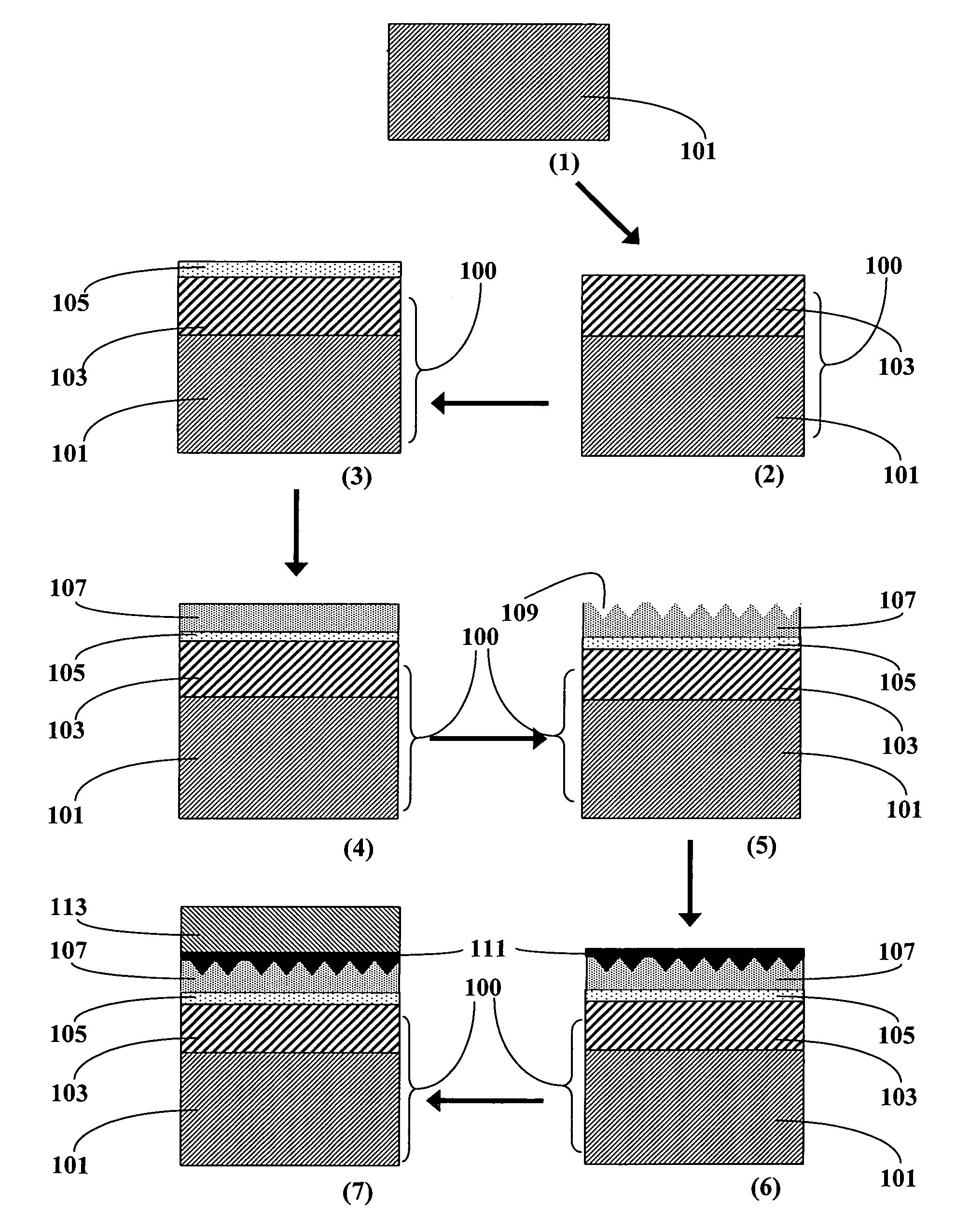Light polarizing products and method of making same
a technology of light polarizing products and products, applied in the direction of polarizing elements, instruments, non-linear optics, etc., can solve the problems of distortion of the optical surface by the polarizing layer, difficult, if not impossible, to allow the pre-formed polarizing layer, etc., to enhance the adhesion of the polarizing layer and other layers, good thermal resistance, and convenient implementation
- Summary
- Abstract
- Description
- Claims
- Application Information
AI Technical Summary
Benefits of technology
Problems solved by technology
Method used
Image
Examples
example 1
The Present Invention
[0128]A polyurethane-urea plastic lens sold under the trade name NXT® from Intercast Europe SPA was coated with a HI-GARD® 1080 coating according to the recommended guidelines from the resin supplier. The final hardcoat was 2-3 μm thick. After surface cleaning a 100 nanometers thick SiO2 coating was vacuum-deposited using a thin chromium layer as adhesion layer deposited on the top of the hard coat prior the SiO2 deposition.
[0129]Then the coated substrate was brushed with a wheel having the appropriate shape and made of polyurethane foam. The wheel was imbibed with abrasive slurry in order to get parallels microgrooves on the surface of the coated lens.
[0130]The abrasive slurry used was a mixture of water and micron size zirconia particles in order to provide a gentle abrasive brushing. The wheel speed was 340 rpm and the pressure of about 40 g / cm2 applied for about 5 seconds. Then the grooved lens was rinsed with deionized water and dried under an infra-red lam...
example 2
Comparative Example
[0141]The same process was reproduced as described in example 1 except that the adhesion layer and the SiO2 layer were omitted. Hence the Hard coat HI-GARD®1080 was directly grooved.
[0142]The polarization efficiency was 98% after dye deposition and 96% after the complete process. Layer delaminating occurred to some lenses during the aqueous treatments such as aluminum chloride treatment or silane treatment leading to unacceptable cosmetic defects. None of the lenses survived to the boiling water test.
PUM
| Property | Measurement | Unit |
|---|---|---|
| transparent | aaaaa | aaaaa |
| depth | aaaaa | aaaaa |
| thickness | aaaaa | aaaaa |
Abstract
Description
Claims
Application Information
 Login to View More
Login to View More - R&D
- Intellectual Property
- Life Sciences
- Materials
- Tech Scout
- Unparalleled Data Quality
- Higher Quality Content
- 60% Fewer Hallucinations
Browse by: Latest US Patents, China's latest patents, Technical Efficacy Thesaurus, Application Domain, Technology Topic, Popular Technical Reports.
© 2025 PatSnap. All rights reserved.Legal|Privacy policy|Modern Slavery Act Transparency Statement|Sitemap|About US| Contact US: help@patsnap.com



